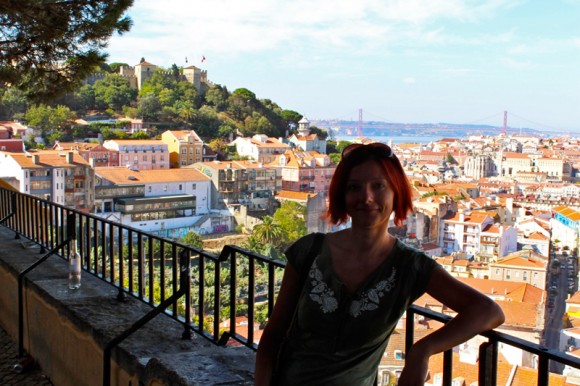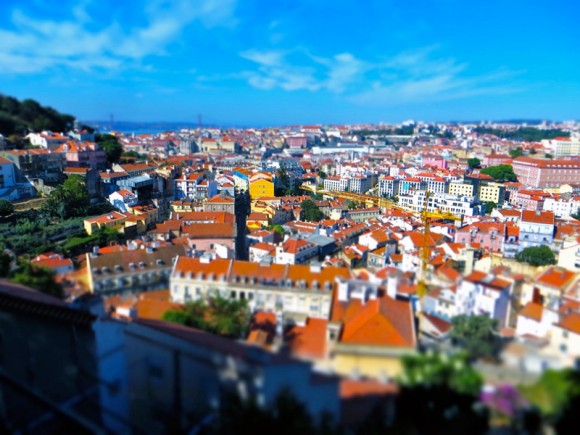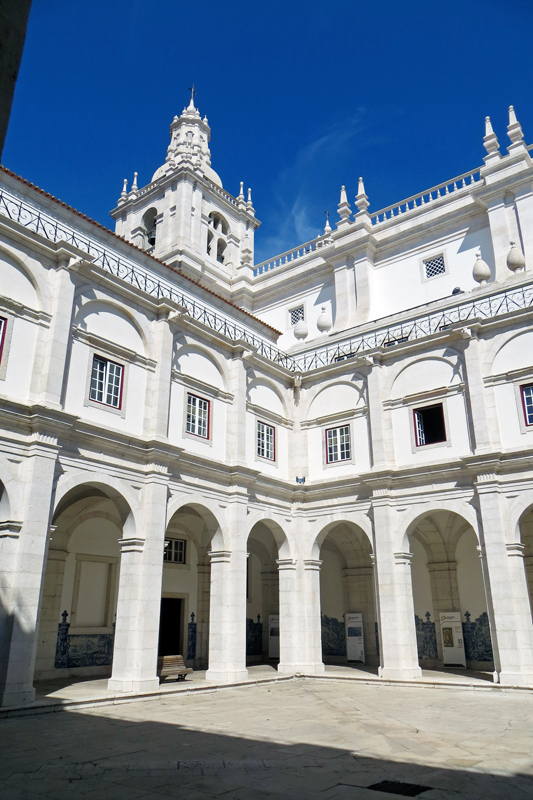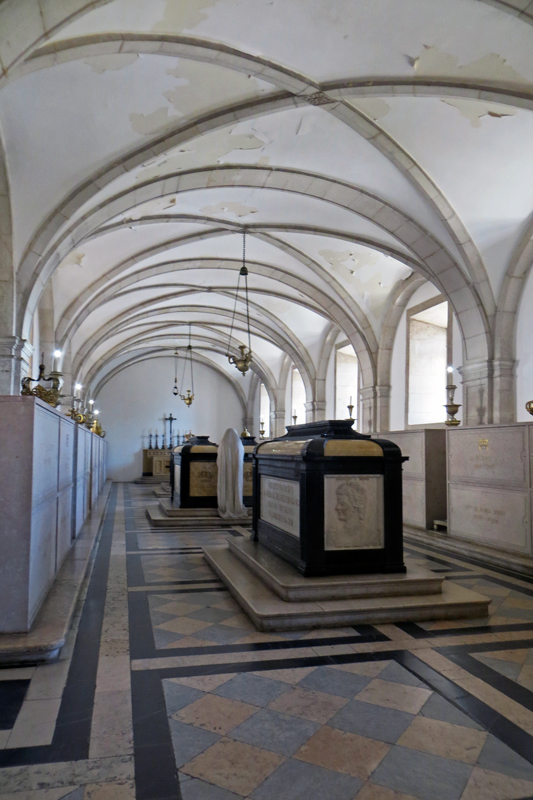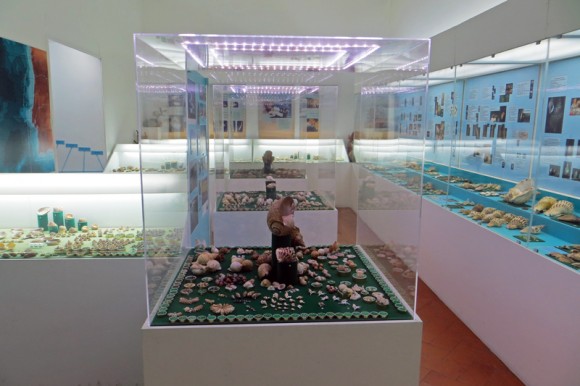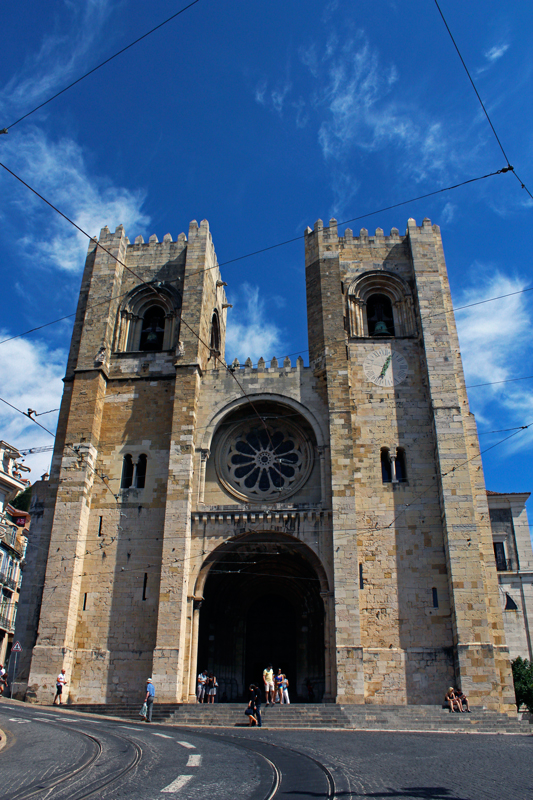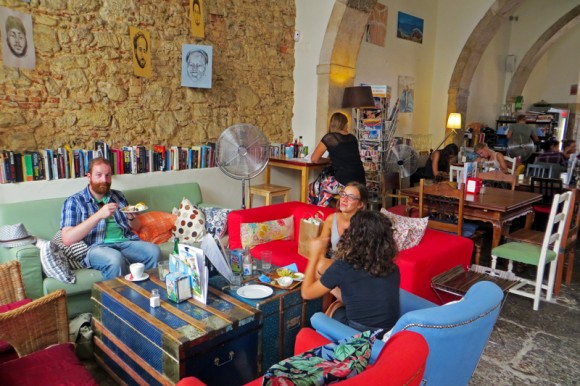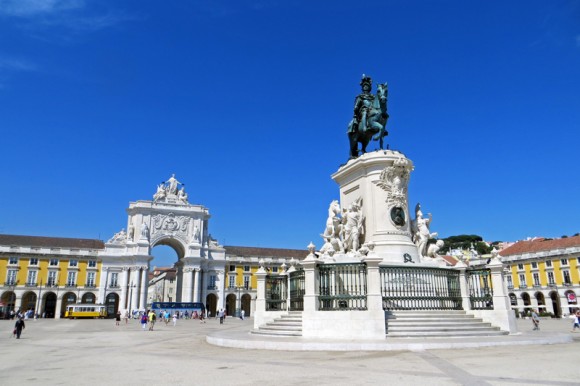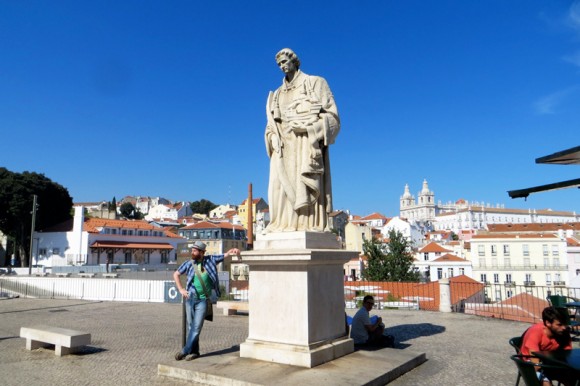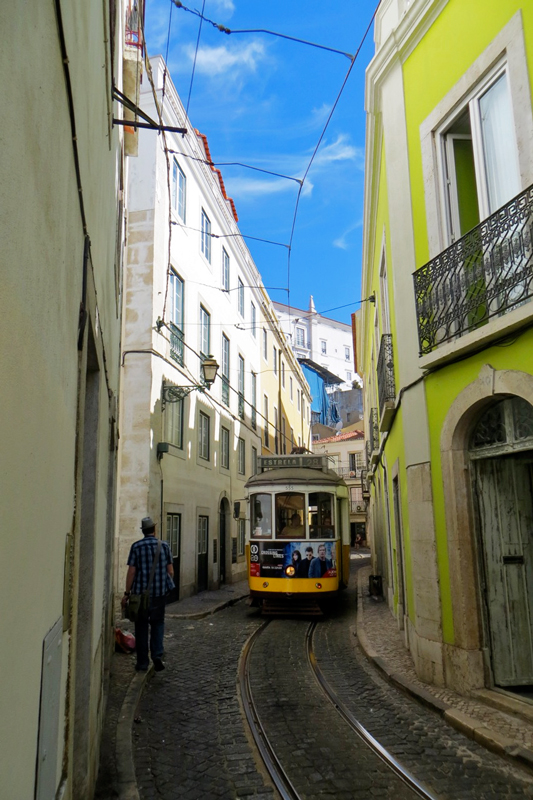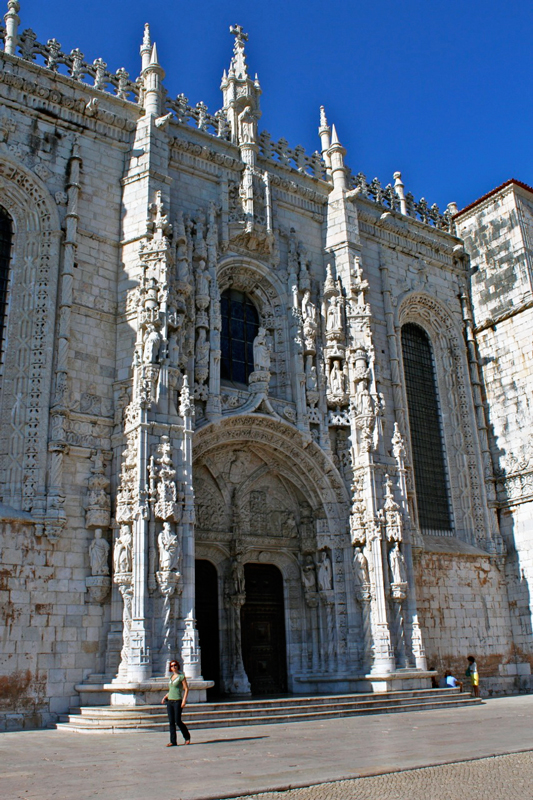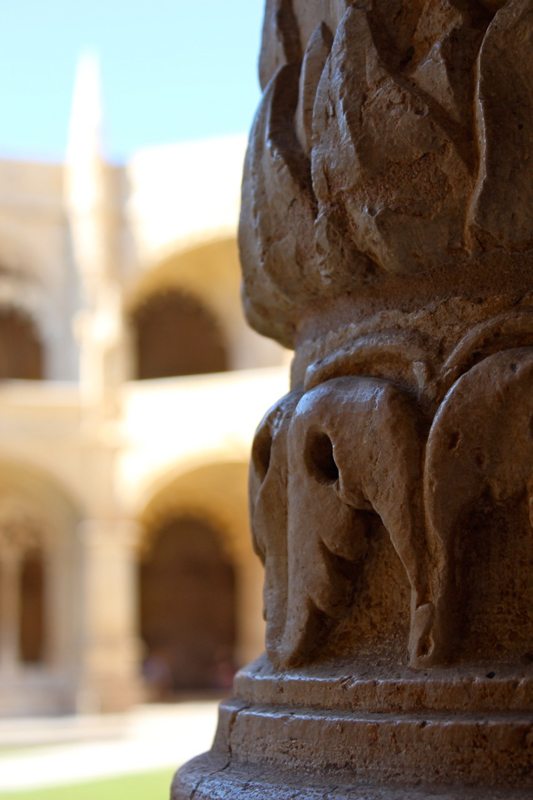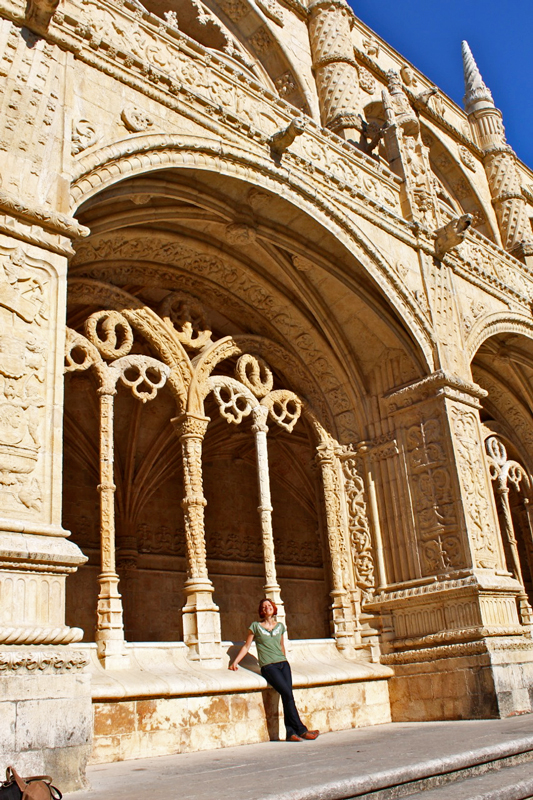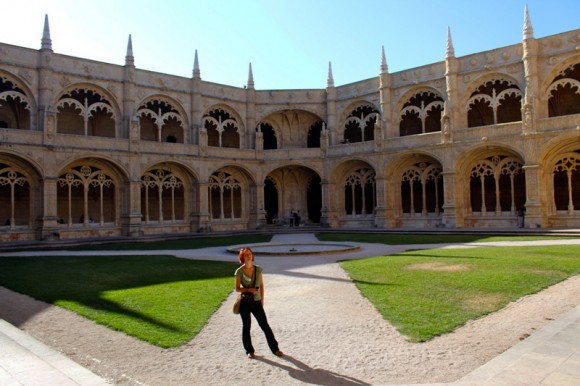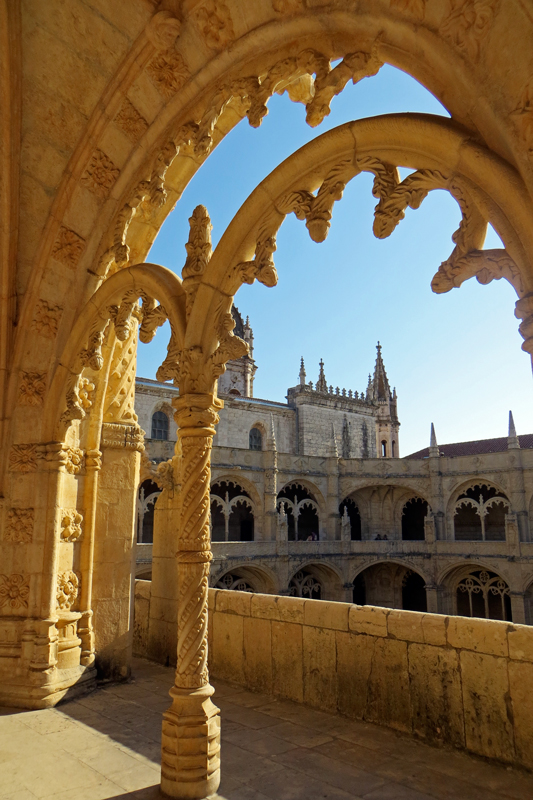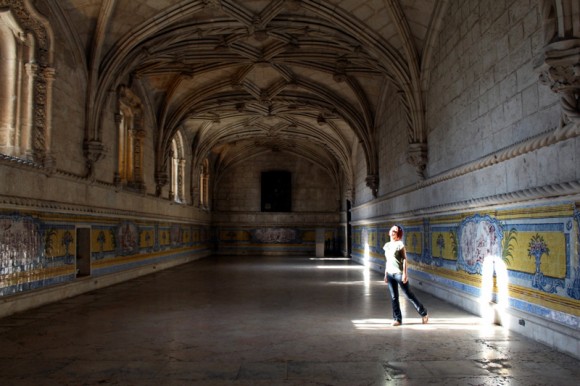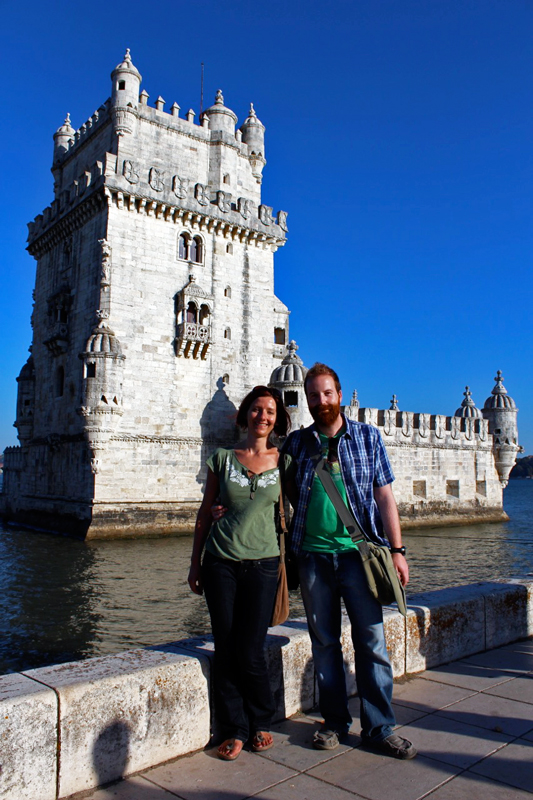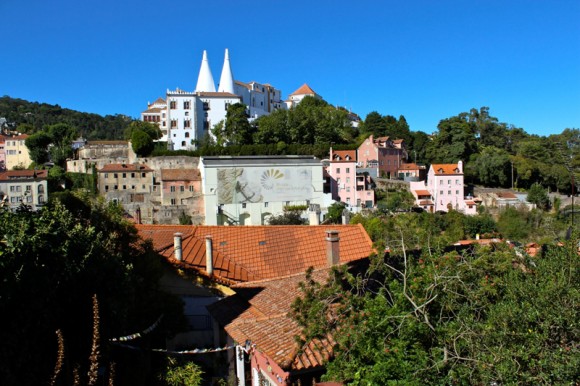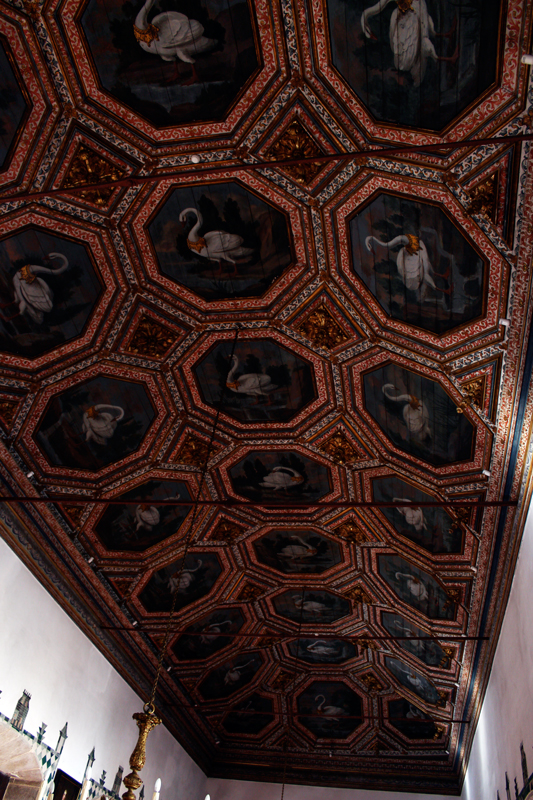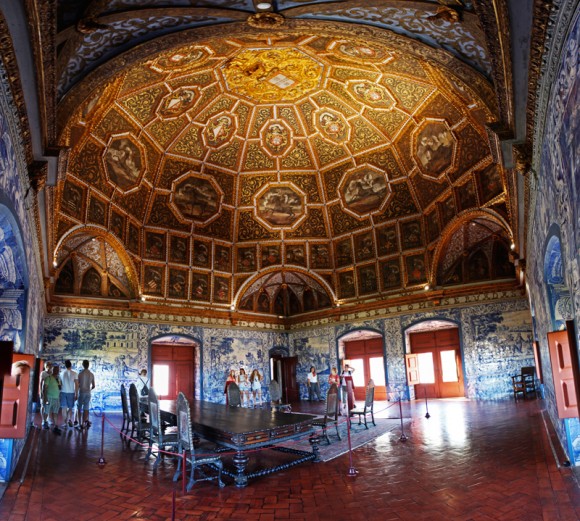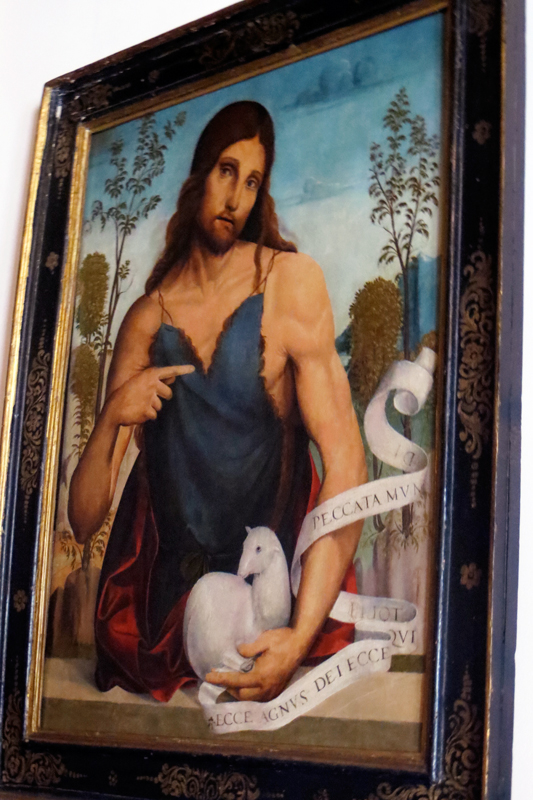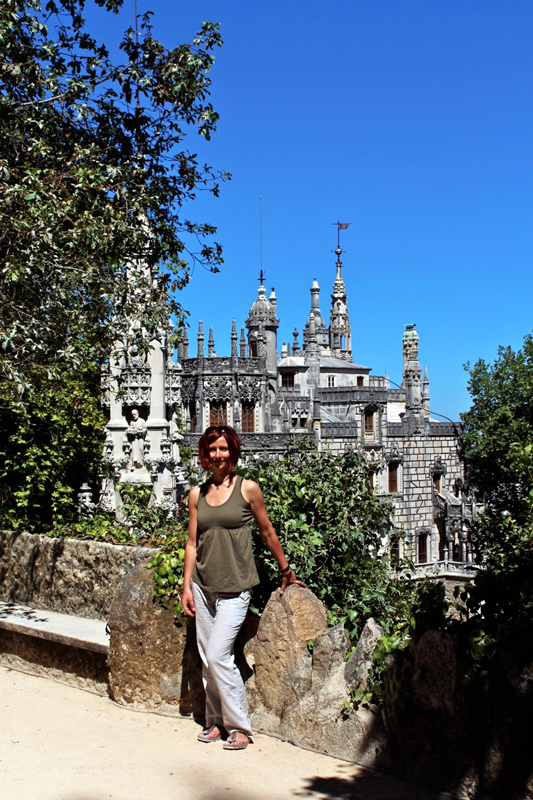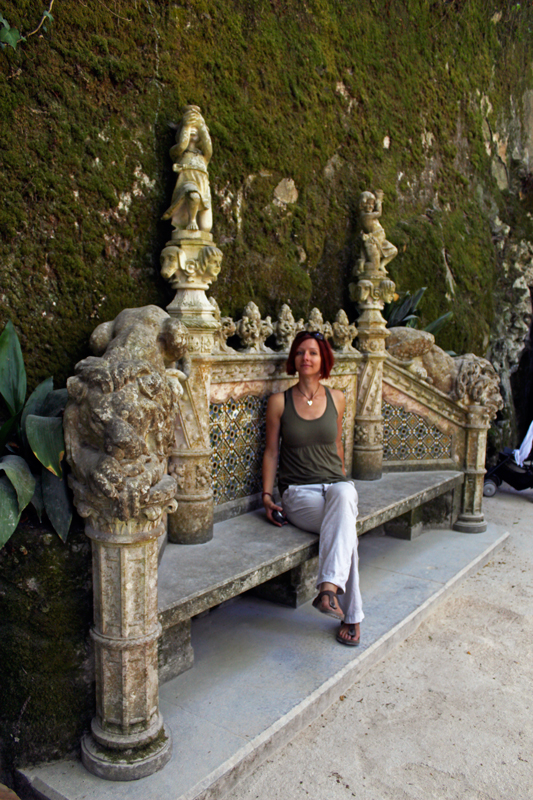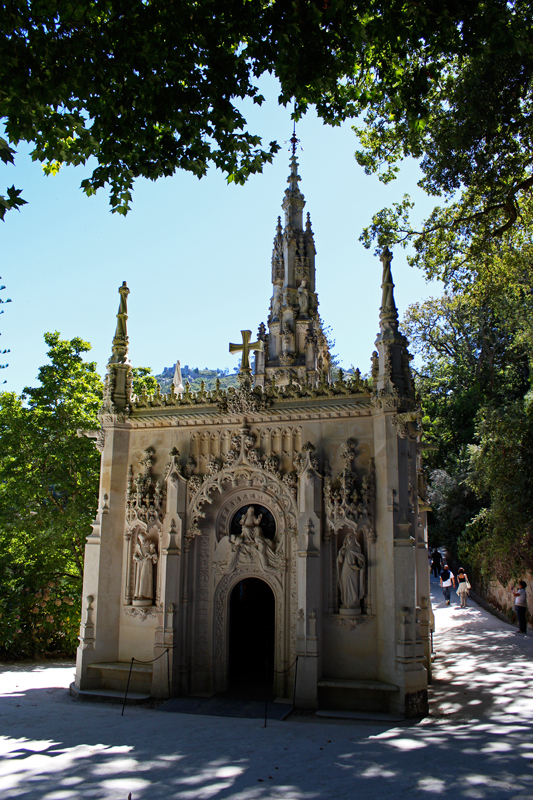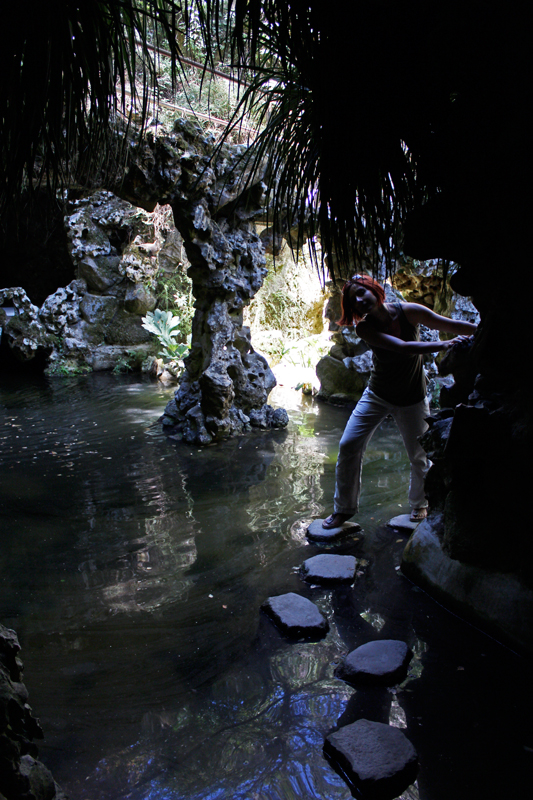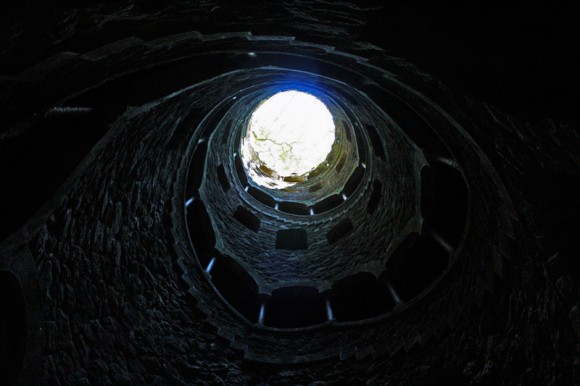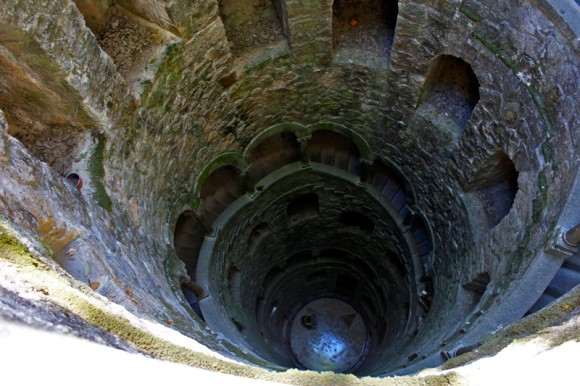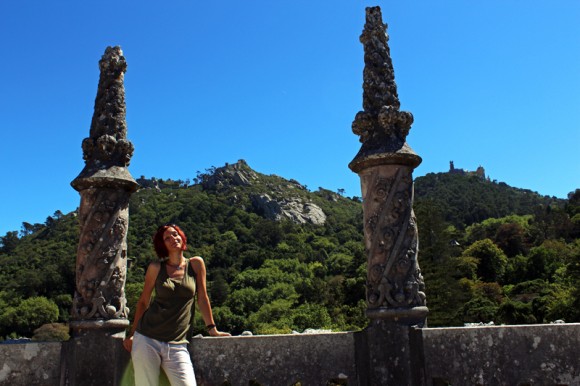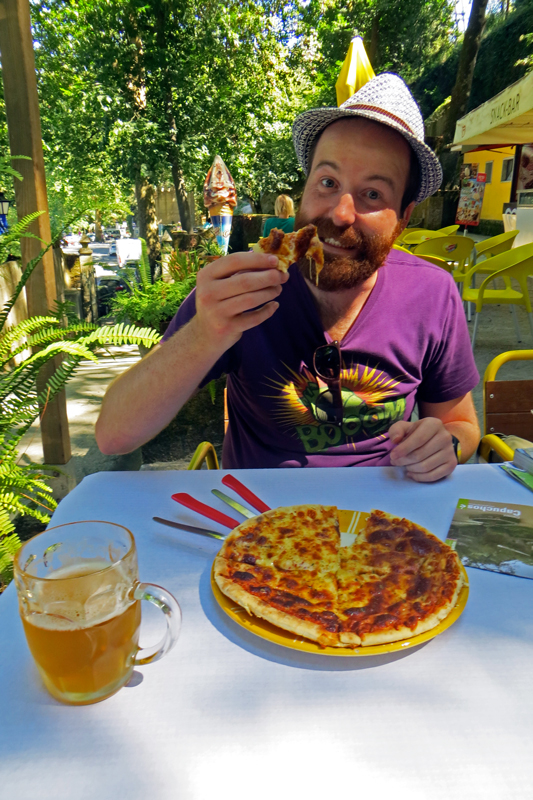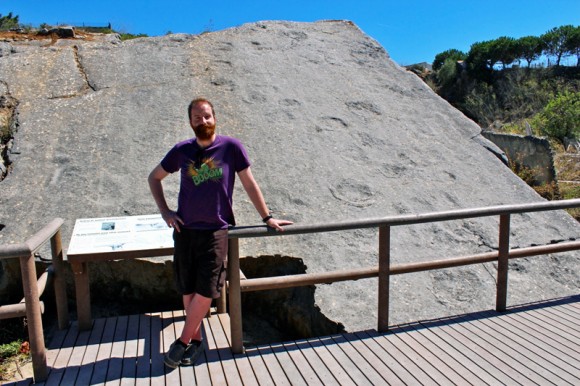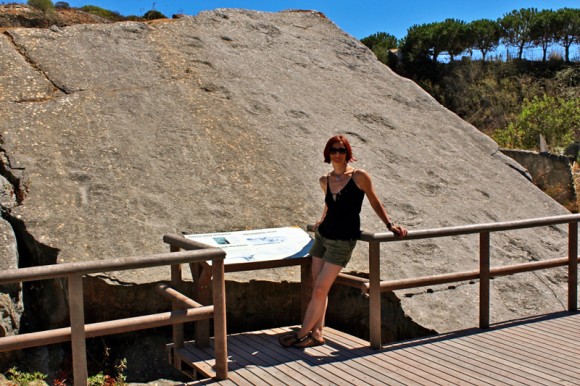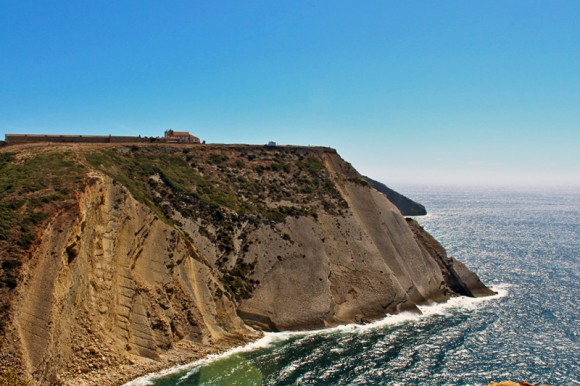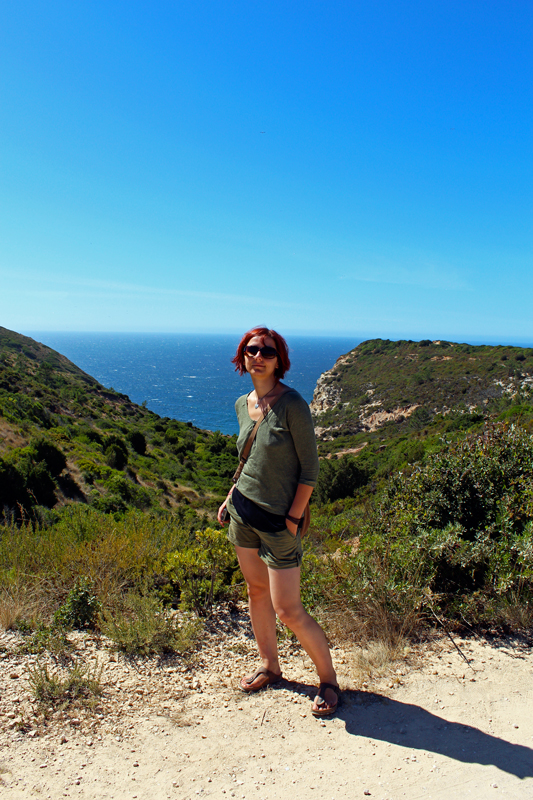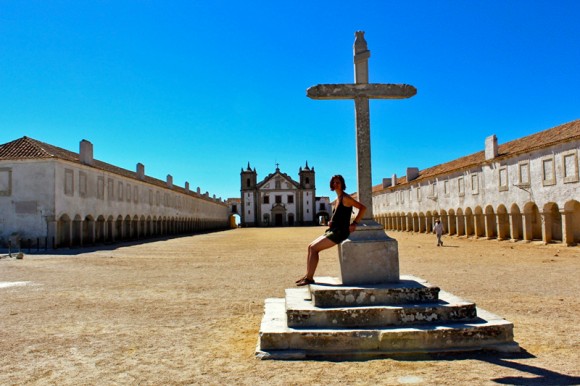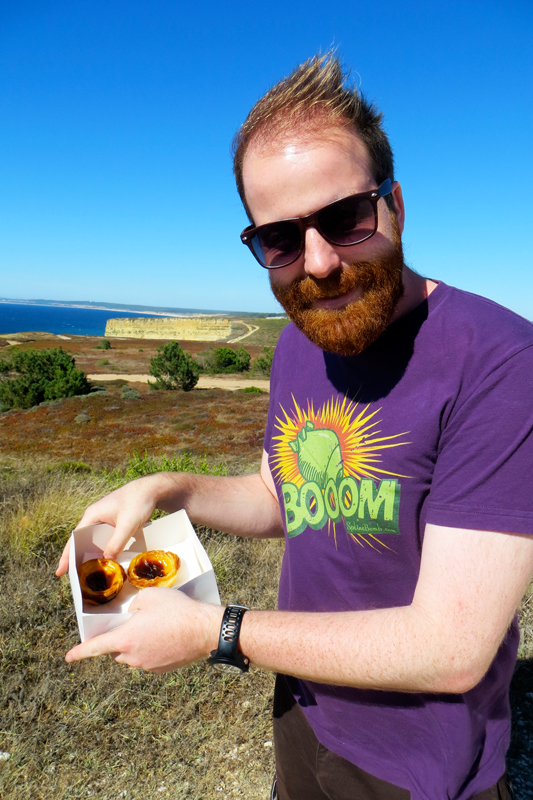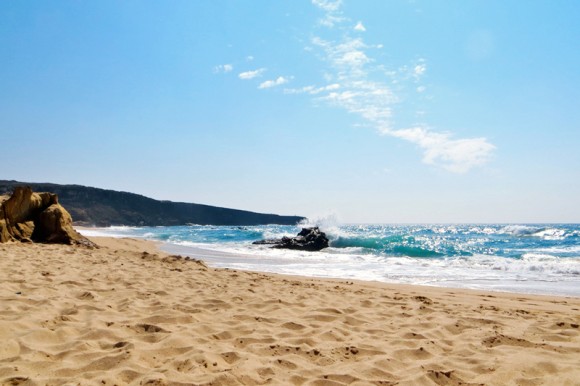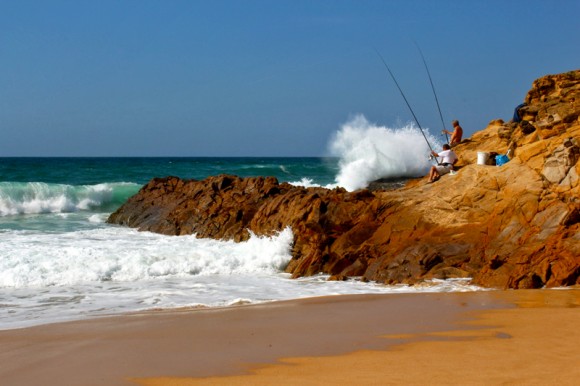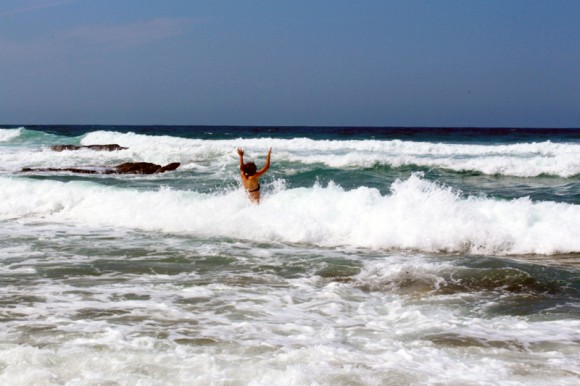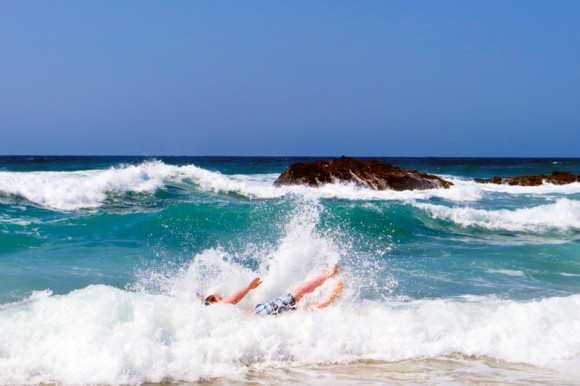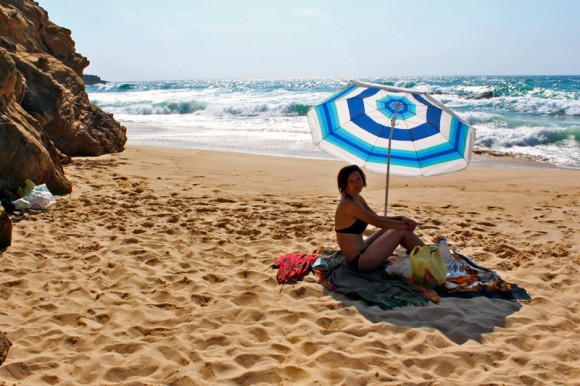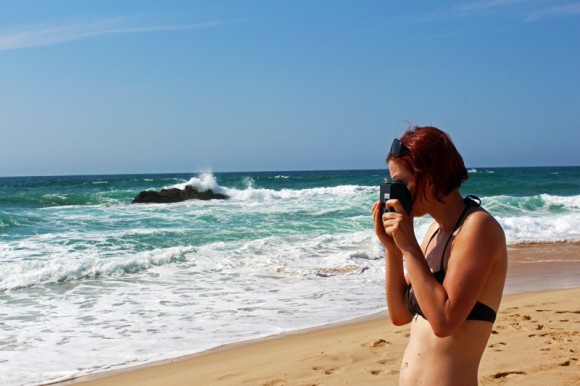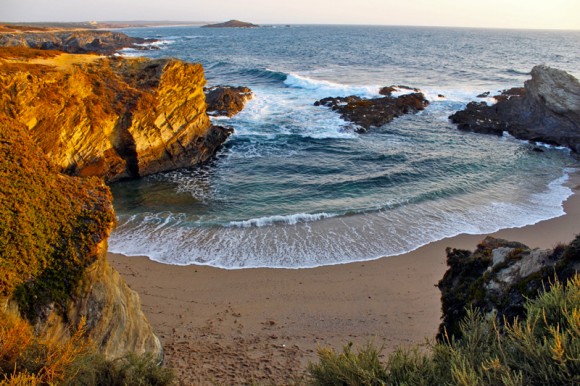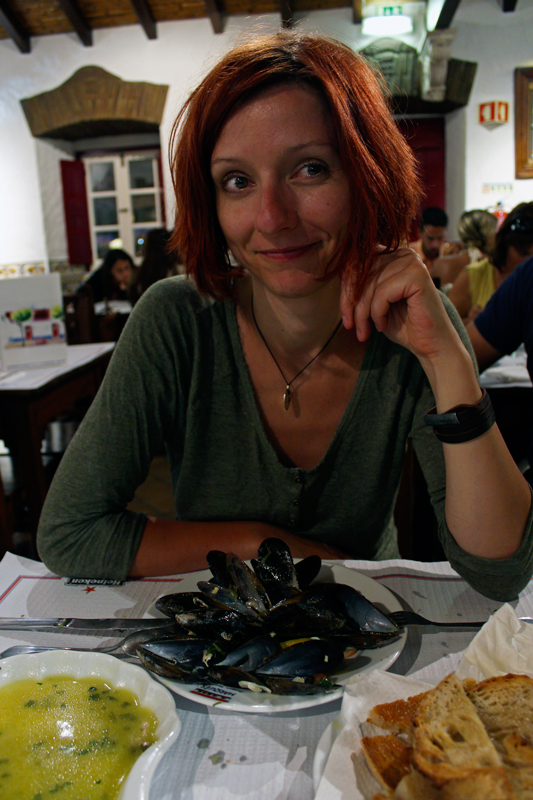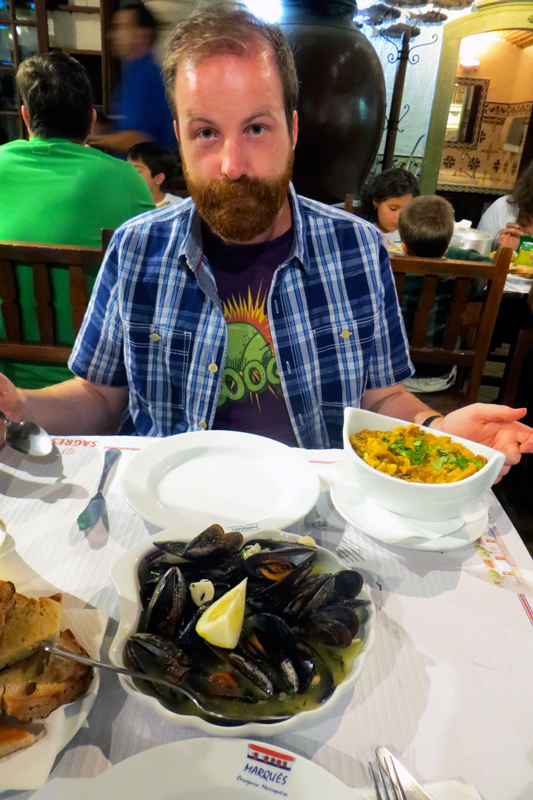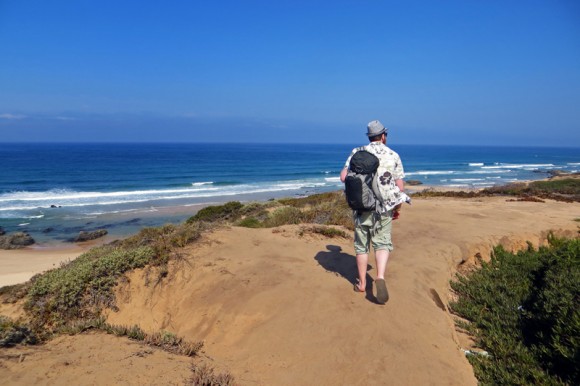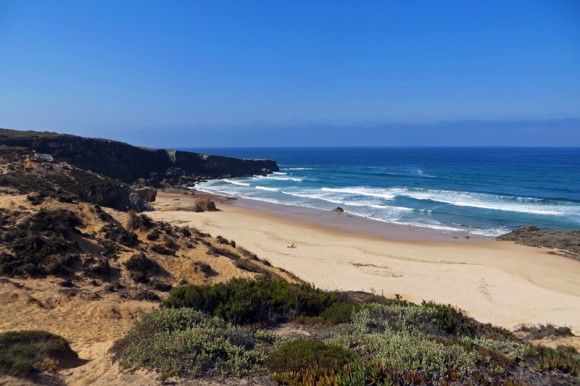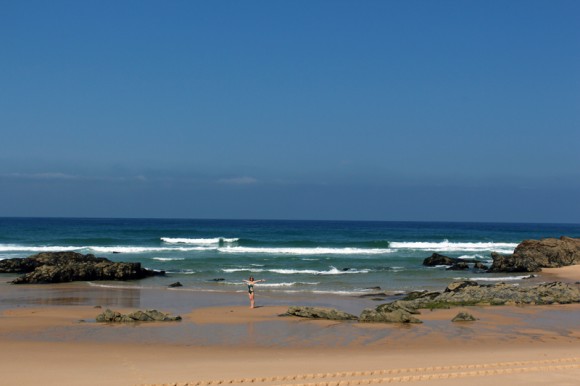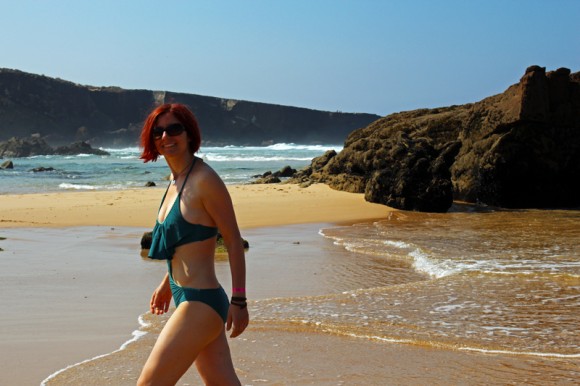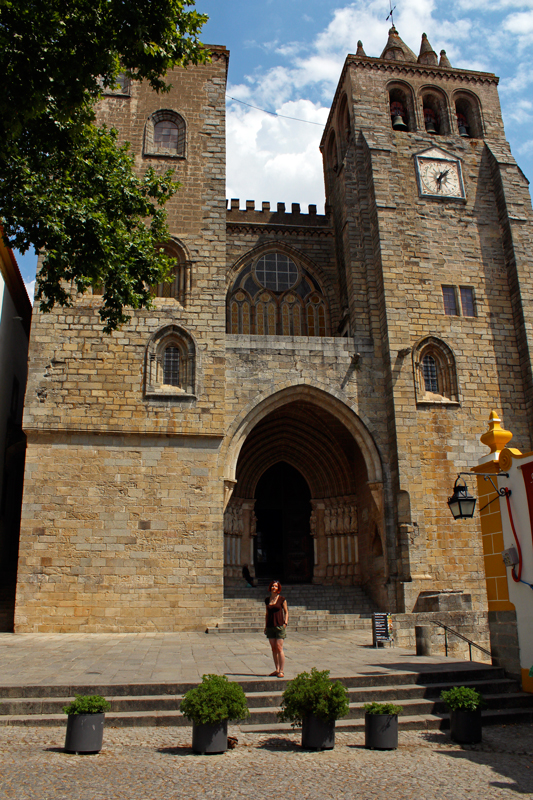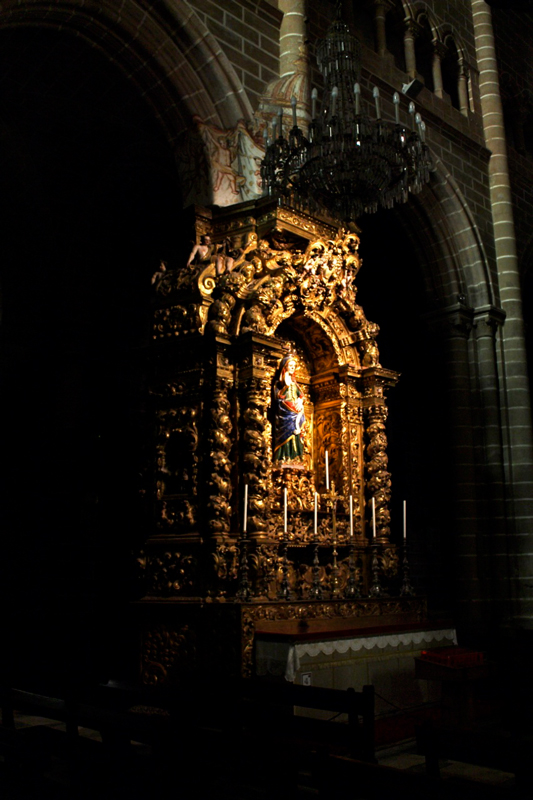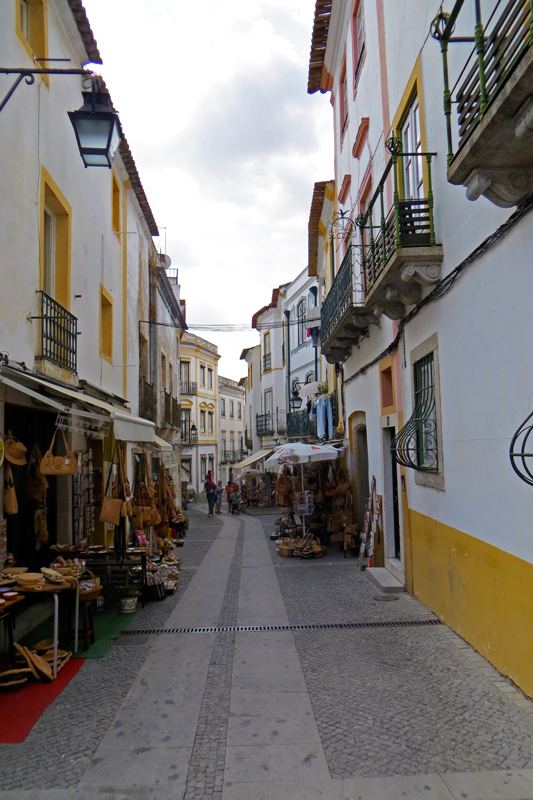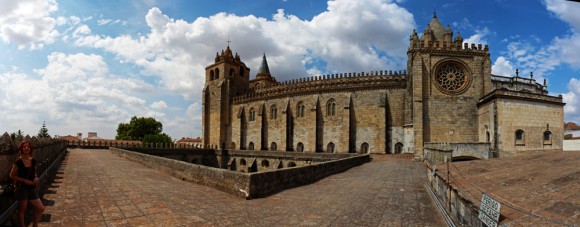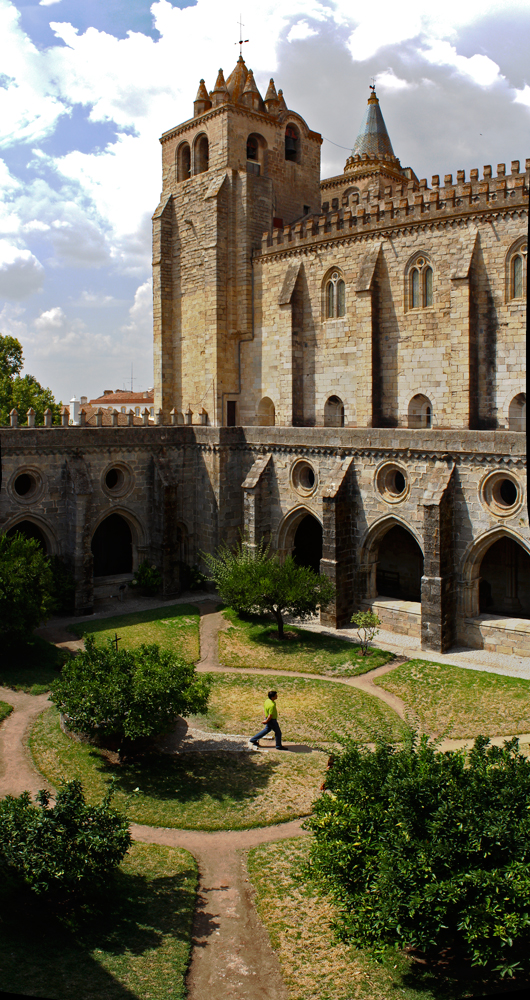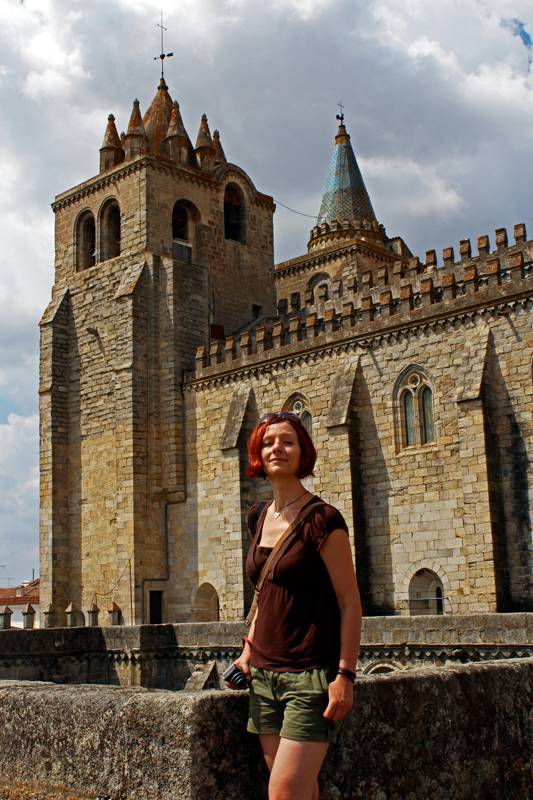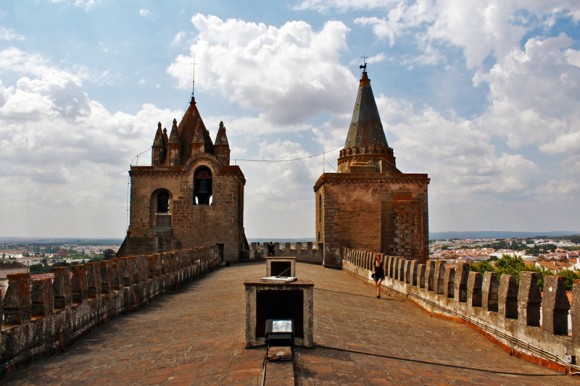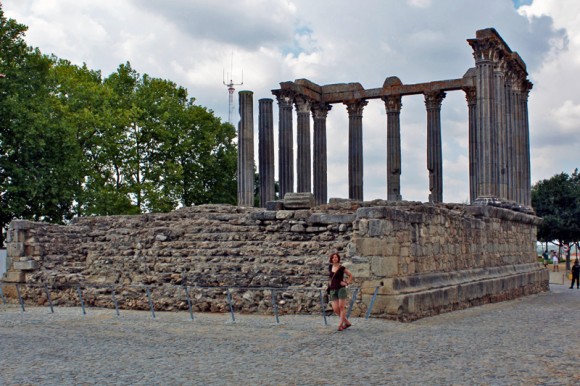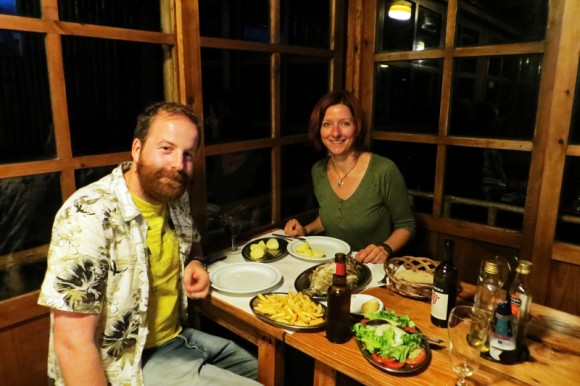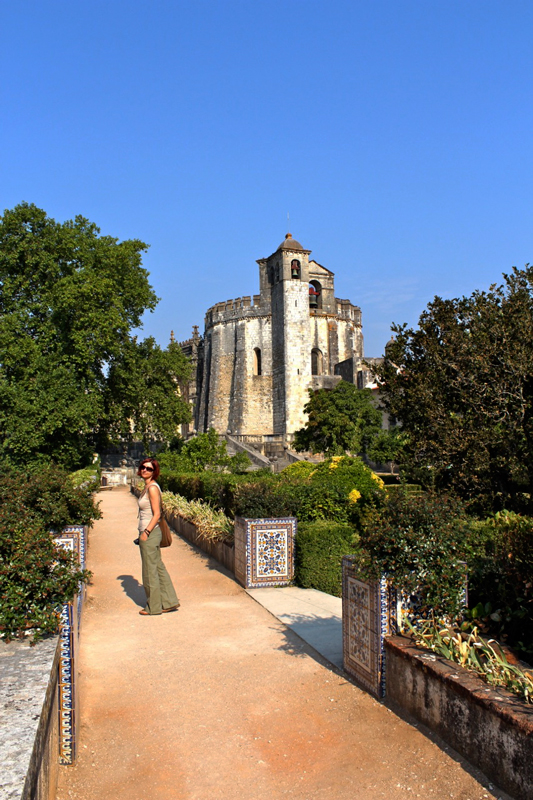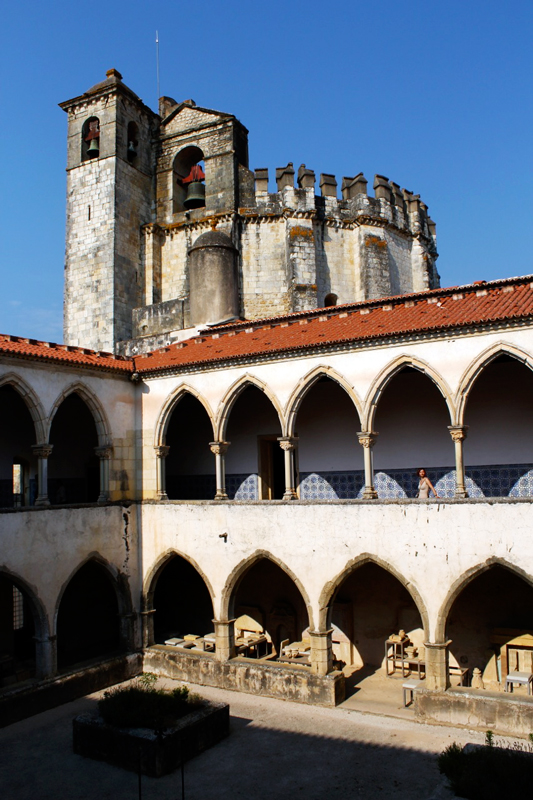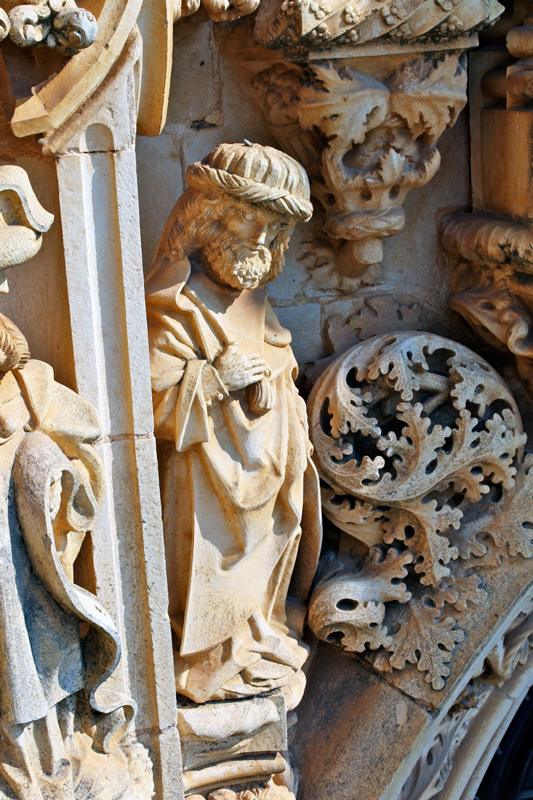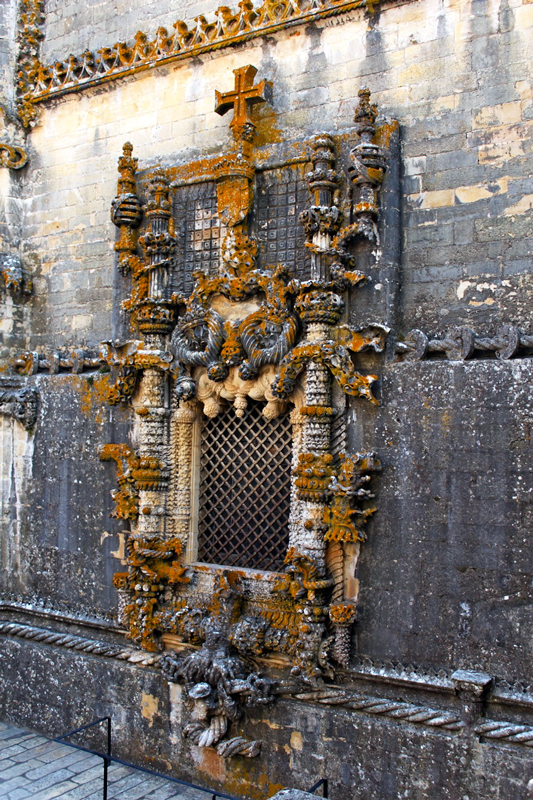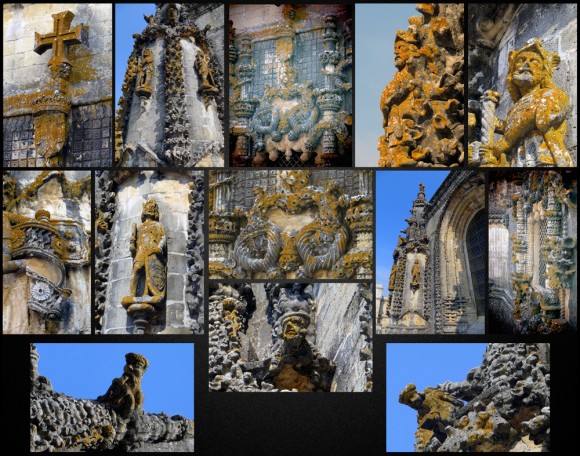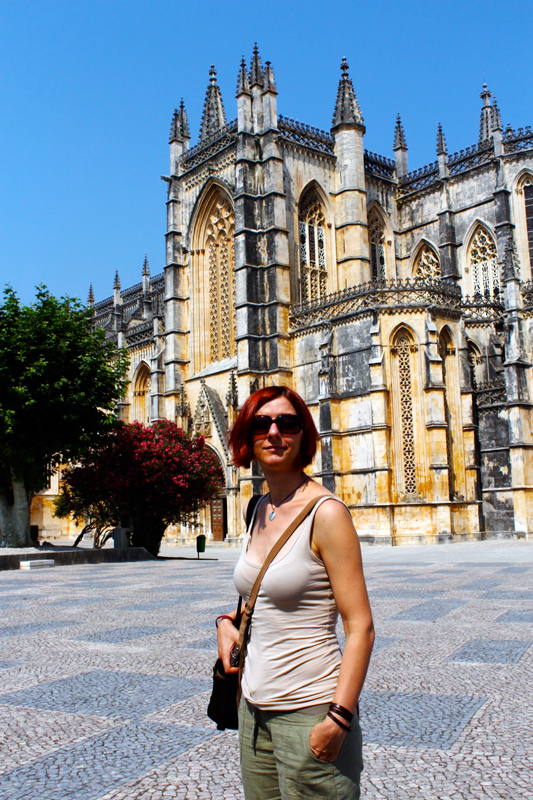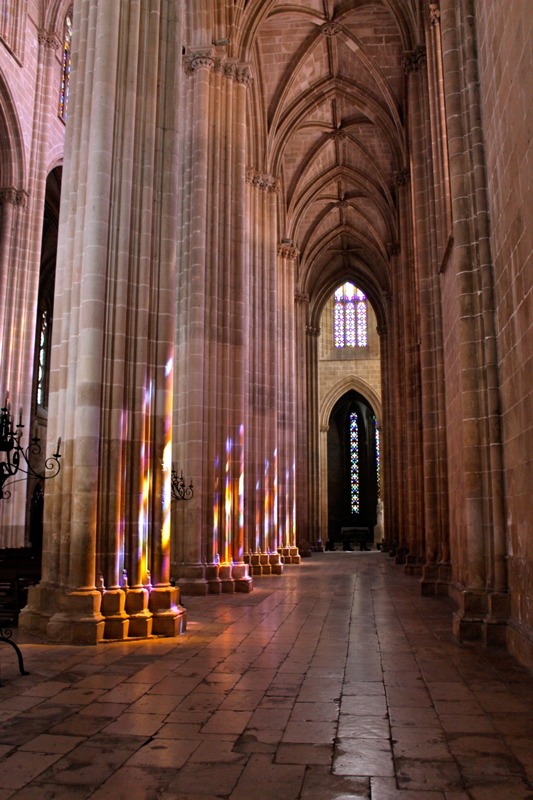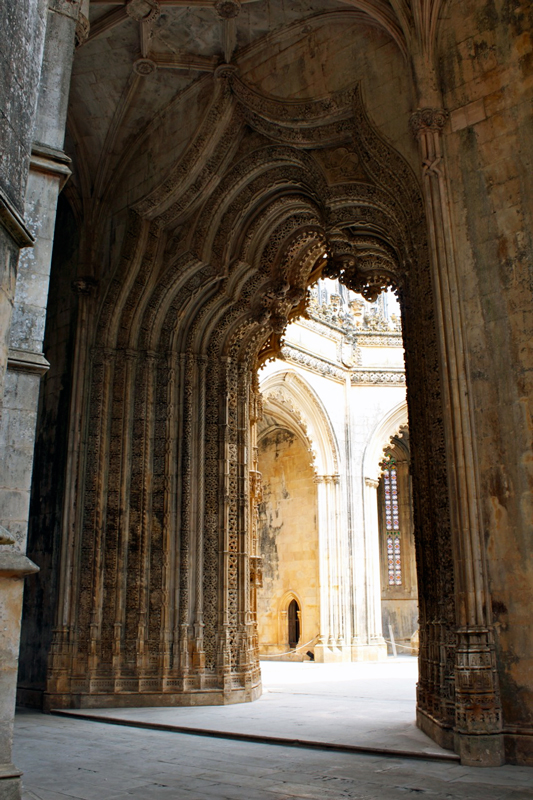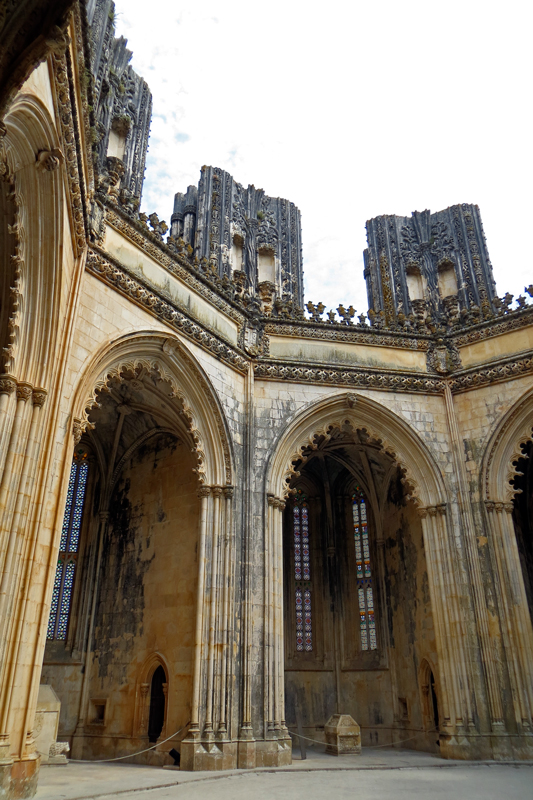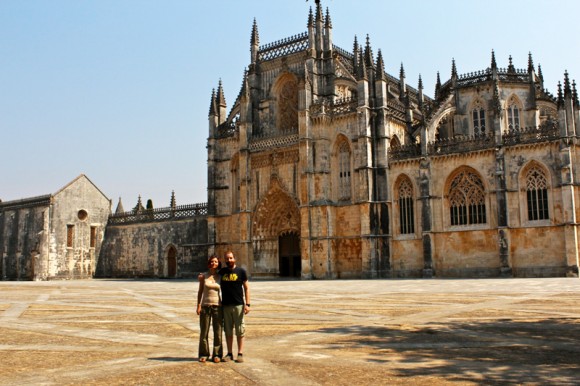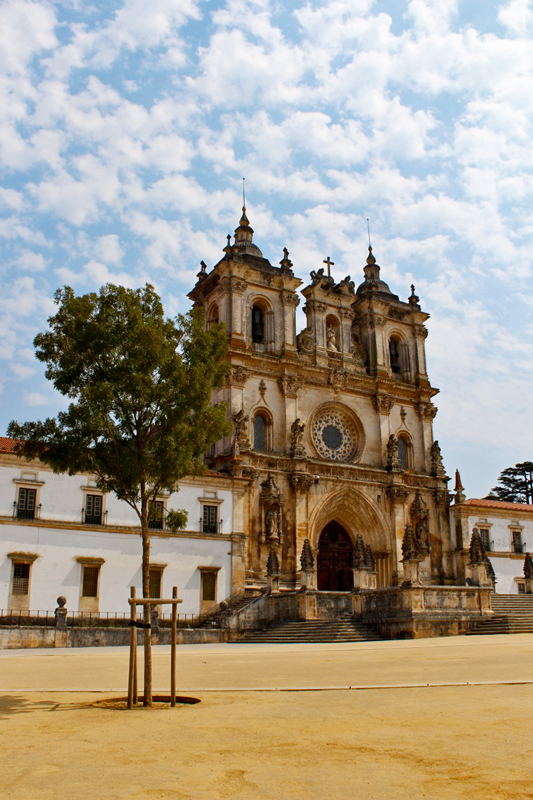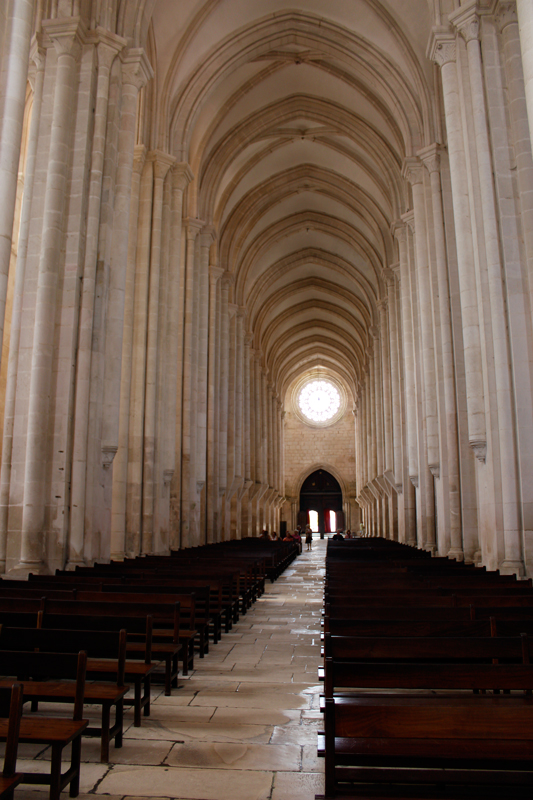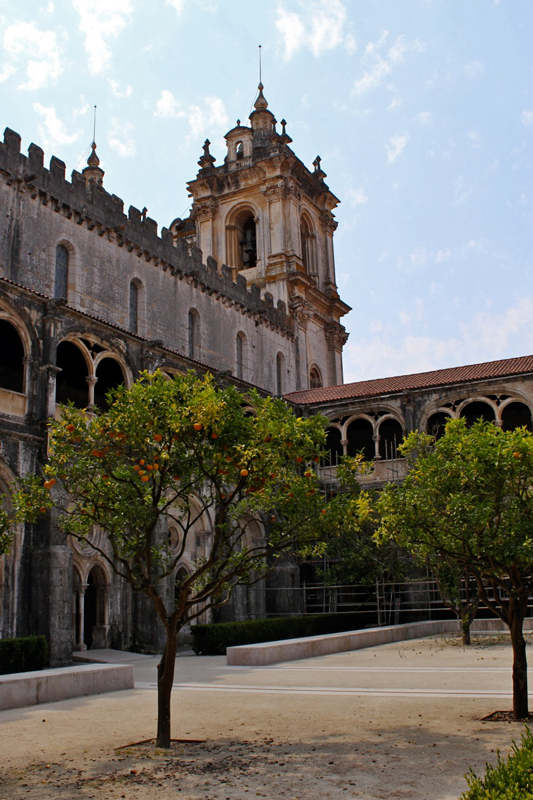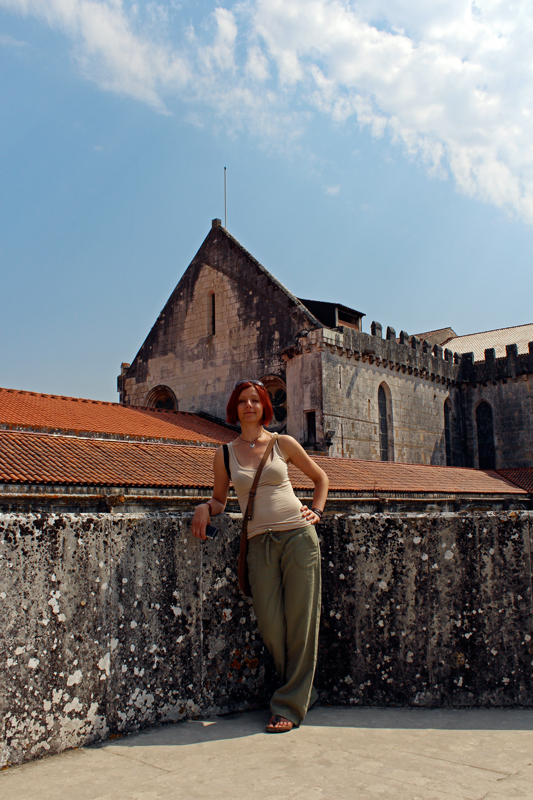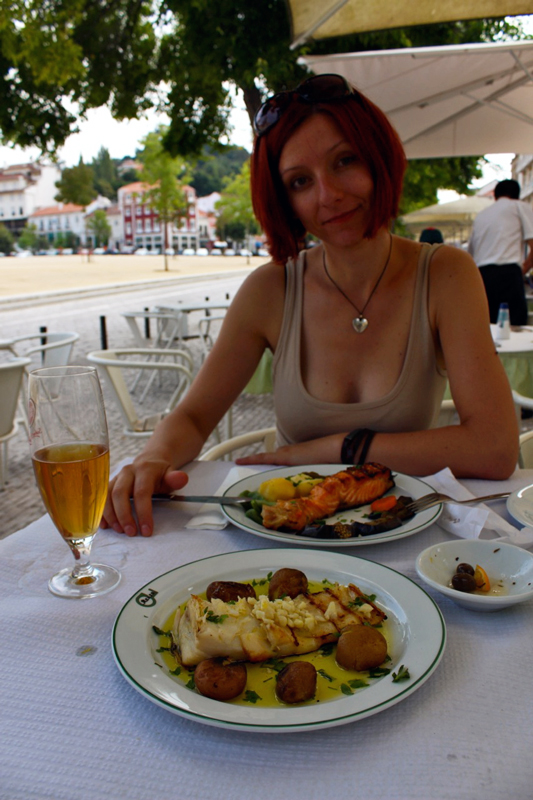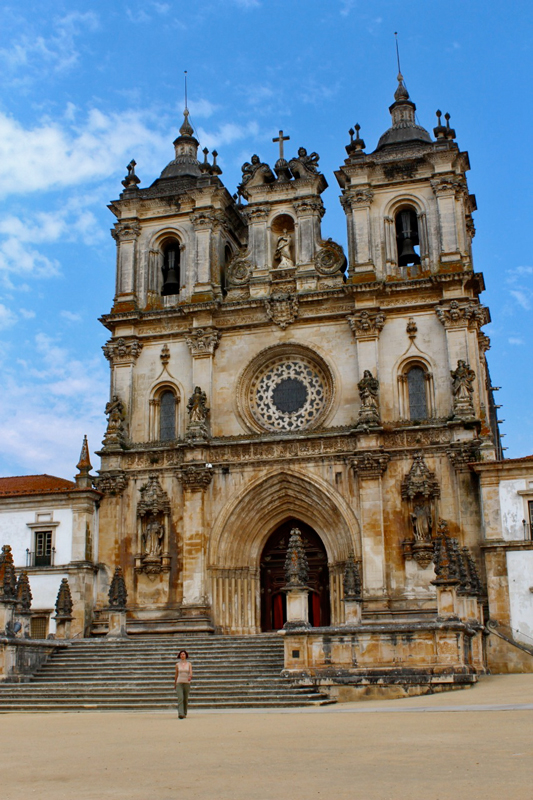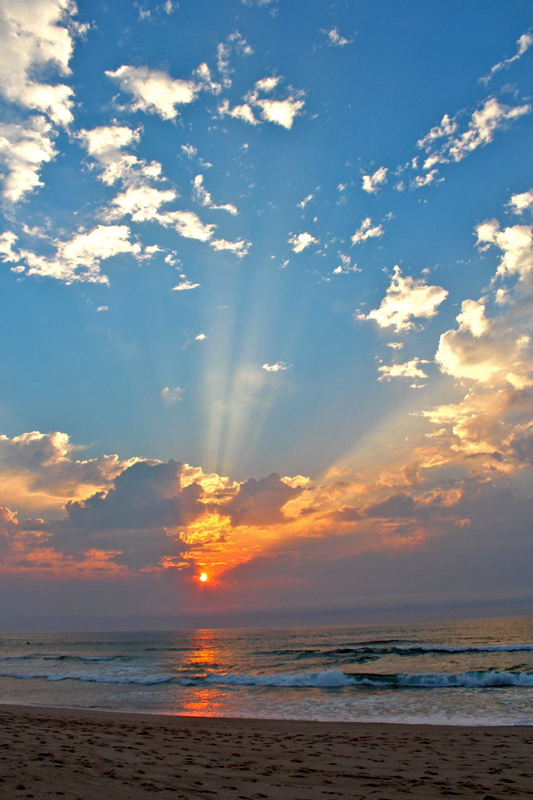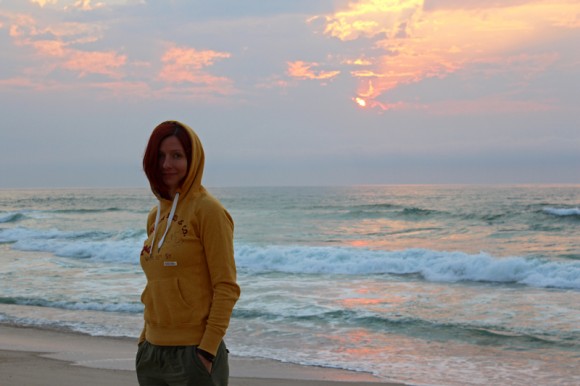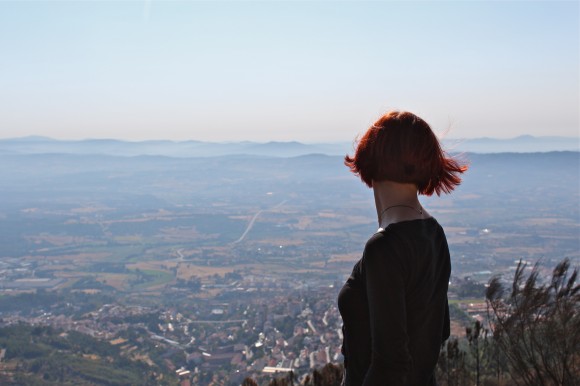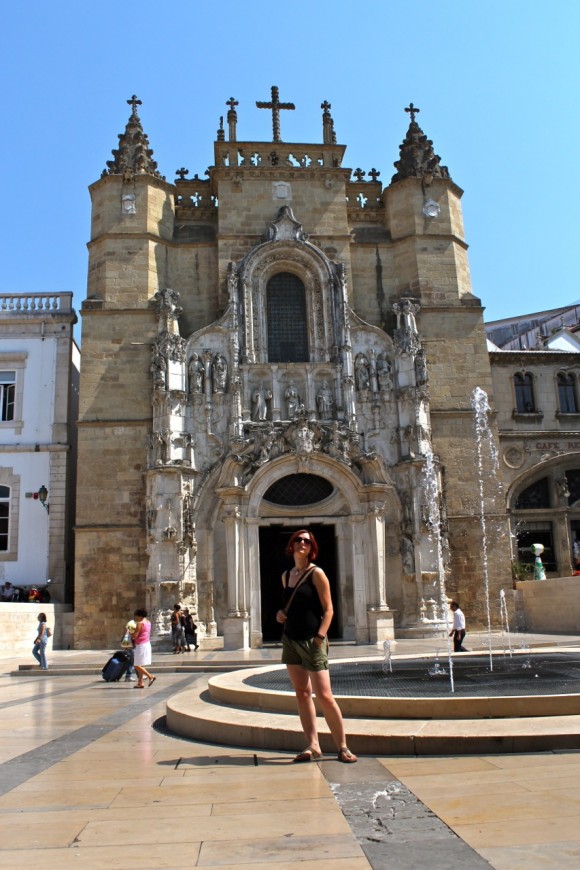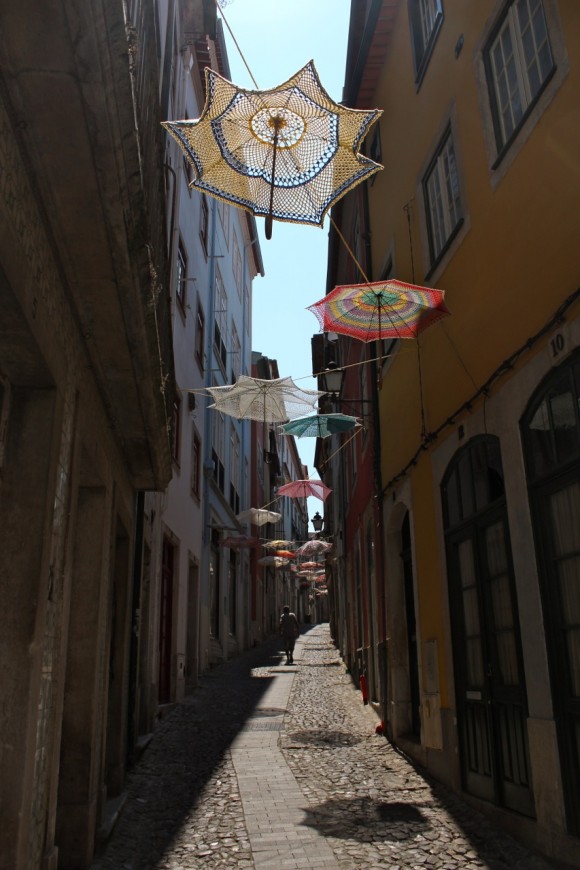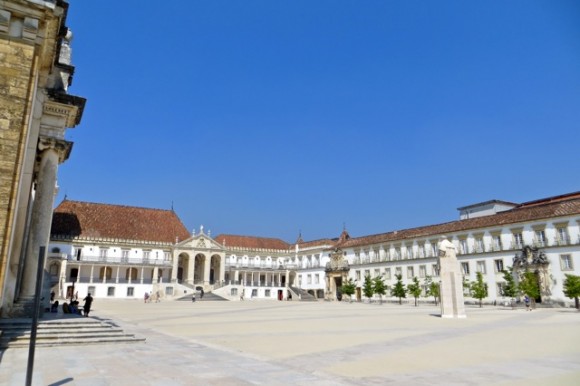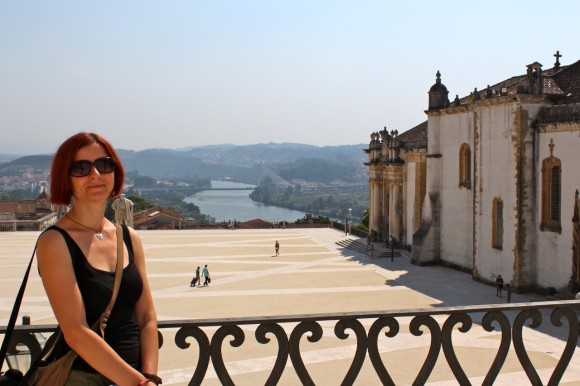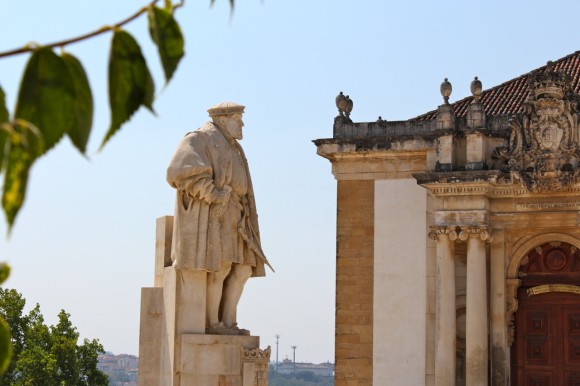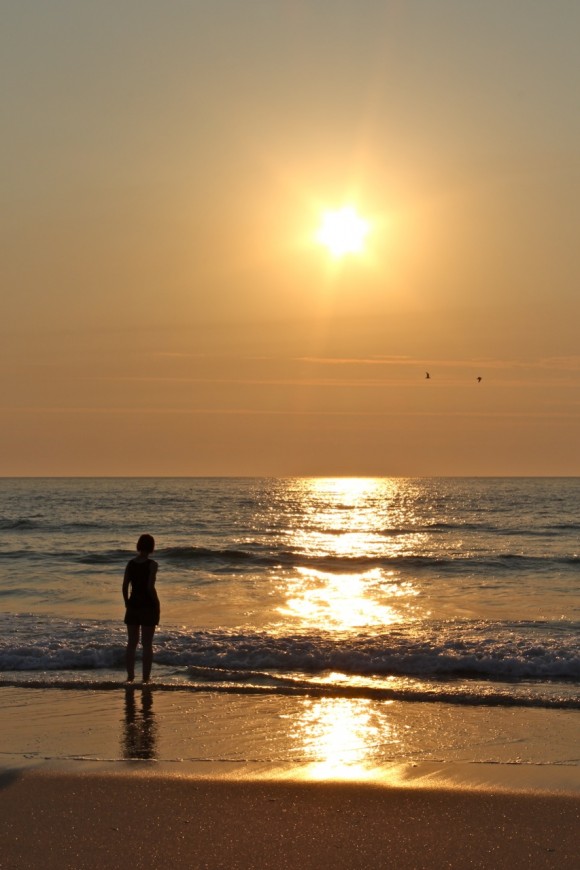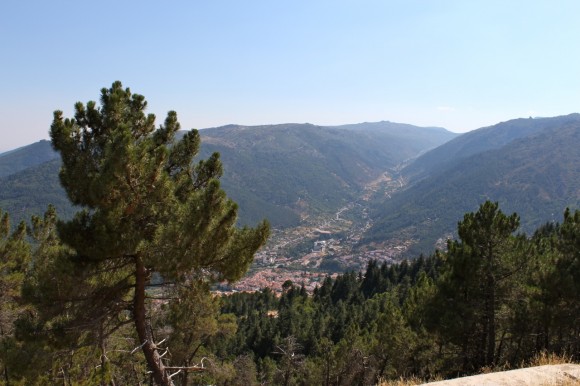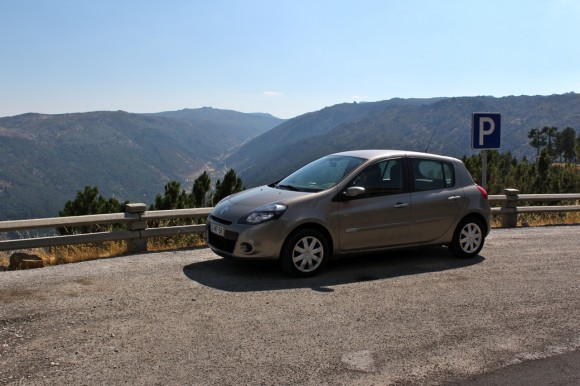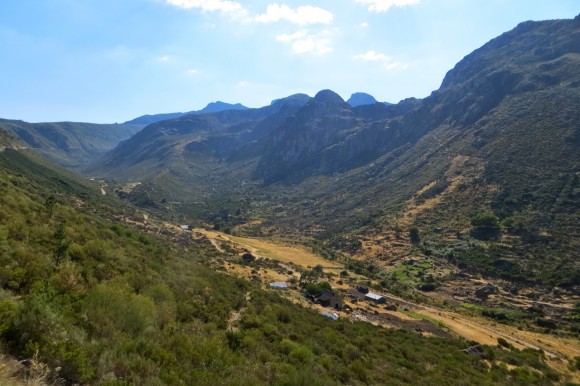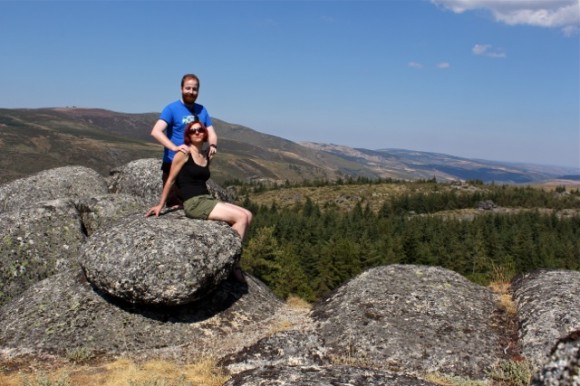Wednesday
Going back to Dublin!
One wrong turn on the highway right next to the airport, and we ended up on the Vasco da Gama bridge, our ultimate sight of the vaycay. As wiki points out, it is a cable-stayed bridge flanked by viaducts and rangeviews that spans the Tagus River in Parque das Nações in Lisbon. It is the longest bridge in Europe (including viaducts), with a total length of 17.2 km. Epic.
We soon left Lisbon far behind, Iestyn was massively stressed out, but I was completely calm and delighted for seeing an additional unplanned sight. Eventually we were fine, returned to the airport no probs, gave back our car and got on our flight to rainy Dublin.
Monthly Archives: September 2013
11
Sep 13
Back to Dublin
10
Sep 13
Lisbon
Tuesday
Lisbon time! A bit scared of the driving and parking in Lisbon’s tiny, narrow, one-way, crowded streets, we did not let the fear get the best of us and bravely headed in for the morning. Iestyn and Nexy did super well and we arrived at our chosen hyper-modern underground parking lot in the middle of all that mattered in Lisbon.
We started off at the Miraduro da Graça, a nice viewpoint over the town with a cherry of a church on top. From there we walked over to the gorgeous Igreja São Vincente de Fora, with beautiful azulejo-filled cloister and epic exhibition of 18th-century azulejo illustration of La Fontaine’s Fables. Also, the biggest collection of seashells.
Quick trip to the flea market behind the church, and outside view of the national pantheon. We were not too keen on the insides of the castle, which was also insanely touristy, so we just made a nice walk around on the top of the hill for views.
A visit to the cathedral and a couple more churches, and we were ready for a rest in a nice Austrian café with toasted sandwiches, strudel and beer/coffee. This gave us energy for more sightseeing, and we headed to the spectacular Praça do Commercio, where we were approached by drug dealers every time we passed by the central statue of Dom Jose I (no less than five times).
We then tried to figure out how to get to Belem by public transport when Iestyn had a genius idea of just driving there, which proved super useful not only because it was only some 7 km from where we were, but also because we later found out that our campsite was very close to Belem as well.
In Belem, we visited the most beautiful place of them all, the ultimate Manueline beauty to rule them, the Mosteiro dos Jeronimos. Do I even need to mention it’s on the list?
Standing at the entrance to Lisbon harbour, the Monastery of the Hieronymites – construction of which began in 1502 – exemplifies Portuguese art at its best. The nearby Tower of Belém, built to commemorate Vasco da Gama’s expedition, is a reminder of the great maritime discoveries that laid the foundations of the modern world.
As our book says:
The mosteiro is the stuff of pure fantasy – a fusion of Diogo de Boitaca’s creative vision and the spice and pepper dosh of Manuel I, who commissioned it to trumpet Vasco da Gama’s discovery of a sea route to India in 1498. There is nothing like the moment you walk into the honey-stoned Manueline cloisters, dripping with organic detail in their delicately scalloped arches, twisting auger-shell turrets and columns intertwined with leaves, vines and knots.
Indeed, nothing like it. Vasco da Gama’s tomb is in the church as well.
From the monastery we walked over to the Tower of Belem, already mighty tired for the day.
09
Sep 13
Sintra
Monday
Getting closer to Lisbon already, we crossed the famous faux-Golden Gate bridge and got a glimpse of the big city on our way to Sintra, whose “cultural landscape” is on the UNESCO list, oh god, how many more still to come?
In the 19th century Sintra became the first centre of European Romantic architecture. Ferdinand II turned a ruined monastery into a castle where this new sensitivity was displayed in the use of Gothic, Egyptian, Moorish and Renaissance elements and in the creation of a park blending local and exotic species of trees. Other fine dwellings, built along the same lines in the surrounding serra , created a unique combination of parks and gardens which influenced the development of landscape architecture throughout Europe.
There are many sights to see in Sintra and surroundings, so we had to make a careful selection. After some navig kerfuffle around town, we oriented ourselves and went first to see the famous Palacio Nacional de Sintra with two iconic cone chimneys on top.
The building itself was beautiful with exquisite interiors and tiling, but it could not be more touristy, so the crowds spoilt it for us a bit.
Our fav piece of art was the painting of Jesus in naughty nightie, but we later learned that it was actually John Baptist donning that sexy little piece.
Afterwards we decided to visit the Quinta da Regaleira, a neo-Manueline extravaganza complete with huge gardens with tunnels, caves, secret doors, waterfalls, famous inverted tower, gods, goddesses, gargoyles and beasts… so much beauty! Nearly not as many people either, it made the highlight of the day.
Late lunch of pizza in a nearby outdoor snack bar, we had enough for the day, and decided to give a miss to the other places around Sintra and just head for the coast.
Iestyn selected Praia Grande due to some more dino fossils nearby, but there was not camping around, so we drove down to Guincho instead, the famous windy beach, mecca of kitesurfers and windsurfers. We found a tiny wind-shielded cove in the rocks and watched the surfers fight those mighty waves.
08
Sep 13
Coast – Cabo Espichel
Sunday
We decided to slowly head up north to the Setubal peninsula, while checking out some of the sights along the coast. After searching through our guidebook Iestyn discovered that there are some fossilised dinosaur footprints near the Cabo Espichel, so our trip for the day was decided.
It was a nice coastal drive anyway, so I didn’t mind. It turned out that there were actually several dino places to visit, some with a little walk along the coast, which was pretty. On Cabo Espichel itself the dino tracks were on a vertical cliff rock, which made me doubt their veracity, as I don’t think dinos had any suction cups on their paws to be walking vertical like that. Anyway, Iestyn was happy as a child, humming the JP tune over the whole trip (and I could tell what it was even though he didn’t hum it very accurately), so it was all good.
On Cabo Espichel itself there was a tiny lighthouse and medium-sized monastery up on the dino cliffs, which was pretty. After a windy cliffy lunch we headed further up the coast and camped in Costa da Caparica for the night. It had nice sun-setty little city beach, which had no waves, but did have two desperate surfers floating flatly around.
07
Sep 13
Praia do Malhão – Porto Côvo
Saturday
Gina’s name day!
After a leisurely morning, during which we purchased a beautiful parasol for Iestyn’s lobsterised body, we went to our now favourite Praia do Malhão to spend most of my name day.
We had great fun in the water, waves ad all, but we were a little bit careless about the tide coming in swiftly through the day, until one huge unexpected wave just swept over us and our stuff. Oh no! I was just munching on my nutella specifically bought for my name day, and now the jar was full of salty water and sand.
Better together from nostalgina on Vimeo.
Our other stuff was also wet and sandy, including my book. We took it as a sign that we’ve had enough fun for the day, picked our stuff and headed out of town, to Porto Côvo. We camped nicely in the town, rinsed out and hanged our wet stuffs and headed for a nice name day dinner in restaurant Marques. Iestyn had a mushroom stuffing dish and I had a bowl full of delicious mussels cooked in wine with garlic and coriander. We shared a chocolate mousse for dessert.
06
Sep 13
Vila Nova de Milfontes
Friday
Thanks to our guidebook, we discovered a beautiful, secluded beach about 5 km from the town, which had the most epic waves. I can’t remember having so much fun playing in massive waves in a long time! It was a great day, except Iestyn got completely lobsterised in the process.
Dinner in a small café in town.
05
Sep 13
Évora
Thursday
The big “drive to the south” day, broken only by a visit to the medieval gem of Évora town. Do I need to say it’s another UNESCO site?
This museum-city, whose roots go back to Roman times, reached its golden age in the 15th century, when it became the residence of the Portuguese kings. Its unique quality stems from the whitewashed houses decorated with azulejos and wrought-iron balconies dating from the 16th to the 18th century. Its monuments had a profound influence on Portuguese architecture in Brazil.
We saw most of the sites in Évora, except for the ossuary, which neither of us had any interest in seeing, because ewww.
In the afternoon we made it all the way to Vila Nova de Milfontes, a chilled out beach town, where we intend to spend a day of beach relax tomorrow. In the evening we went to a grilled fish restaurant beautifully located on the beach, and had some huge grilled sea breams, which were delicious.
03
Sep 13
Serra da Estrela – Coimbra
Tuesday
We left the camp and headed south-west to Coimbra with the help of Nexy’s GPS. After finding a parking surprisingly near the centre of Coimbra without knowing where we are, we were ready for the sights in the heat.
Starting at the Praça 8 de Mayo, the beautiful Igreja de Santa Cruz gave us a taste of what’s ahead in the town. After climbing some back-breaking stairs we found the super-stunning old cathedral.
The real gem of Ciombra however lies in its old university, and we spared no expense in getting around the place, including the exquisite library and even academic prison (which is exactly what it sounds like). Our guidebook says:
The Old University consists of a series of remarkable 16th- to 18th-century buildings all set around the vast Patio das Escolas. In the square is a statue of João III – it was he who re-established the university in Coimbra in 1537. The square’s most prominent feature is the18th-cenury clock tower. From the courtyard gate there is a staircase to the rather grand Sala dos Capelos (Graduates’ Hall), a former examination room hung with dark portraits of Portugal’s kings, and heavy quilt-like decoration. However, all else pales before the Biblioteca Joanina (João V library) from early 18thcentury. It seems too extravagant and distracting for study with its rosewood, ebony and jacaranda tables, elaborately frescoed ceilings and gilt chinoiserie bookshelves.
Coimbra university is another UNESCO World Heritage site, read about it here.
Afterwards, almost dropping dead from the heat, we had a great lunch downtown, including a mango mousse for Gina. We’ve been eating magnificently on this trip so far.
We decided not to linger around Coimbra but push for the coast for the night. Nearest place we found was Figuera da Foz with a campsite right on a vast and awesome beach where we saw the sunset, then had a couple of drinks in the camp bar while charging Nexy, and wearily dropped down in our great tent (Stinky II).
02
Sep 13
Porto – Serra da Estrela
Monday
In the morning we went for another walk in Porto – the light was lovely and the streets were bustling actual life (as opposed to the tourist life of Sunday afternoon) – little shops open, people going to work, rubbish men taking bins and all that. The waking up riverfront was all fresh and breezy. We lingered around the town for a bit and then packed up our bags and headed south-east to the Parque Natural Serra da Estrela, the mountainous area which contains Portugal’s mainland’s highest peak, Torro.
We found the highways and the backroads in great shape and surprisingly empty of traffic. We arrived in Manteigas, a small village in the heart of the park, sleepy and incredibly spotless white, every single house looking like it just has been polished up. There was a funeral going on but not much more than that, and we didn’t find the park HQs.
From Manteigas we took the most scenic route up the glacier Zêzere Valley with epic views and frequent stops. We made it all the way to Torre, which was a bit underwhelming after all that beauty. The campsite in the top of the valley was beautiful and deserted, but it would not have been possible to bring in the car and we didn’t want to leave it up on the road, so we found another campsite on the other side of the range, which was small and cosy and had wifi surprisingly enough. The whole hillside above it was scorched by a recent fire, which apparently lasted for four days and It was quite a sad view.
At night I woke up and threw up all over (outside of the tent though) but then slept well and the rest of the night was peaceful.
